The extensive rain we’ve had in Stephenville this year has been great, but it brings with it an unfortunate problem for peaches. Split Pits.
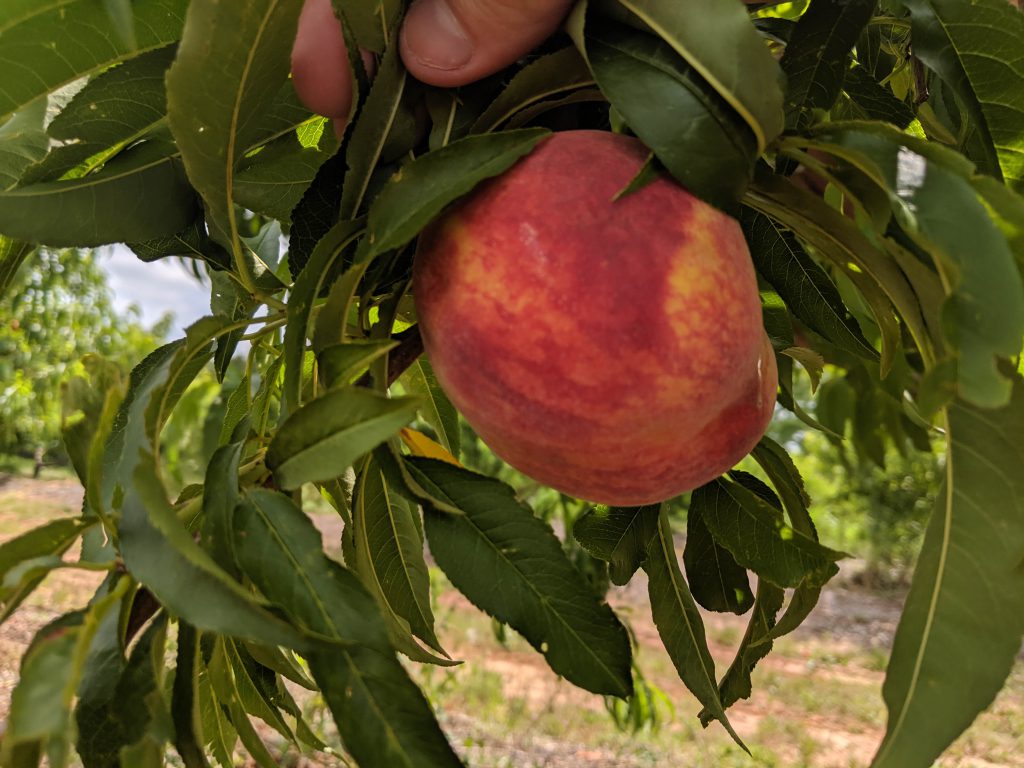
Split pit is a defect in peaches that occurs when the fruit enlarges too quickly, thereby creating a void or hollow center inside the seed or around the seed. The result of this is a peach that often splits into the open air near the stem, opening a path for fungal or insect pests to invade. A peach with a split pit is unmarketable. It looks funky and offputting. While the flesh on the outside of the peach may be just fine, everyone expects to see a picturesque pit at the center of the peach surrounded by rich red colored flesh. Split pit peaches don’t look exactly “picturesque” on the inside.
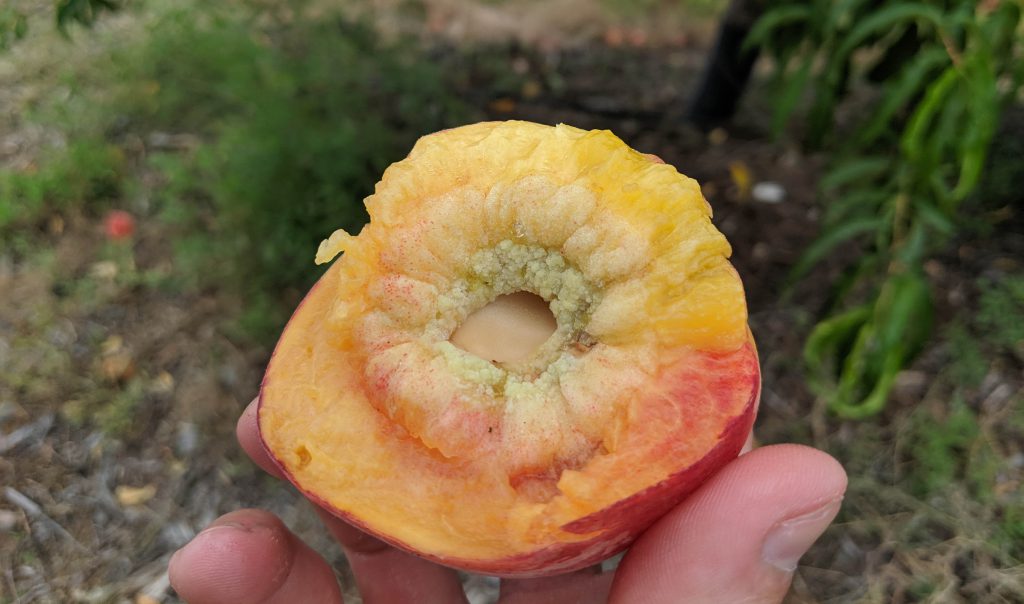
What Causes Split Pits?
Some cultivars of peaches (types of peaches) are more prone to this defect than others, but it isn’t simply a matter of cultivar. Excessive rain (hello Stephenville, TX 2019), excessive irrigation, and thinning can cause it. Regardless of the cause, the result is a peach that typically just gets thrown away.
Earlier ripening cultivars are more prone to this defect. The crop we had with split pits this year is the cultivar “Harvester” which should ripen about mid June. These pictures are from late May.
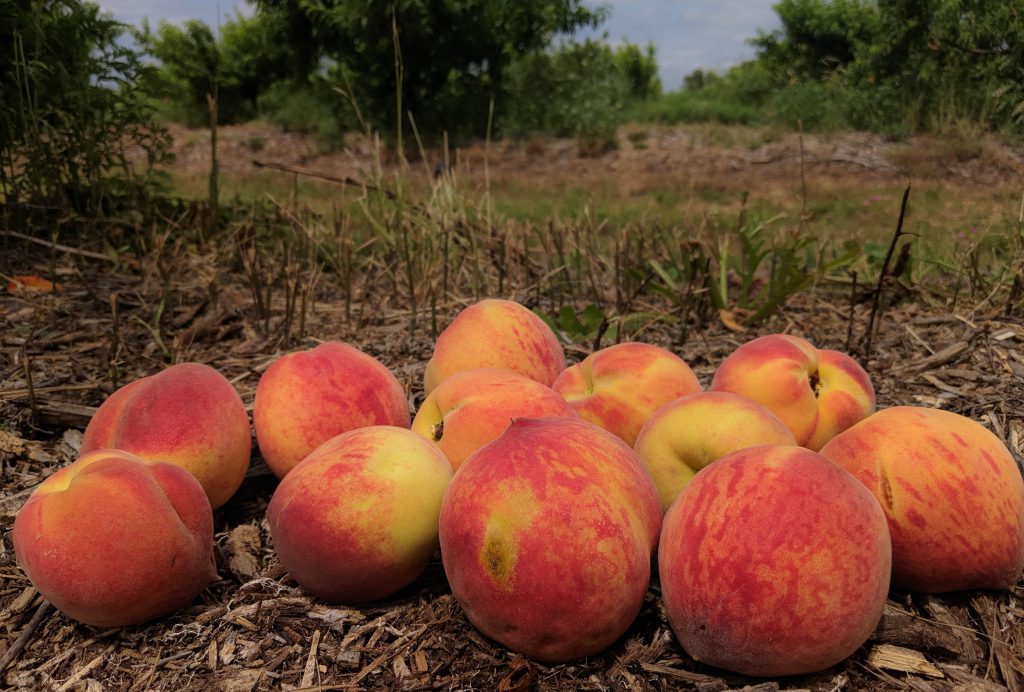
Is it safe to eat split pit peaches?
Depending on the severity of the split pit, your peaches may still be great to eat! If the peach hasn’t split all the way to the stem, opening up the inside of the peach to the outside air then you likely don’t have any mold in there. If there isn’t any mold, there is little reason for concern about the suitability of the fruit for consumption. However, if there is mold, it isn’t advisable to eat that peach. Mold can be unsafe to consume, so it’s safest to just toss that peach and reach for another that isn’t split all the way to the open air.
So How Do You Tell Which Peaches Have Split Pits Inside?
Because not all split pit peaches will split all the way to the stem, it can be hard to tell which ones have a split pit. The answer is in whether or not that peach should be ripe yet. A peach with a split pit will ripen faster than normal. These peaches pictured in this post should have ripened for another 2-3 weeks, but they’re already ripe and ready to eat.
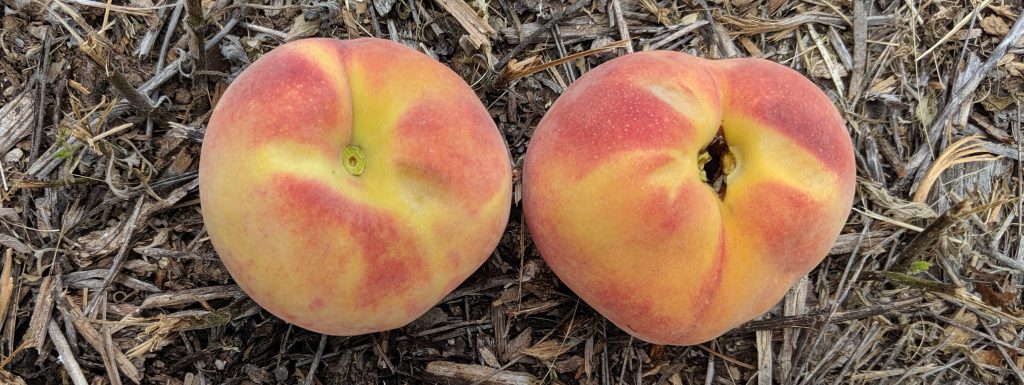
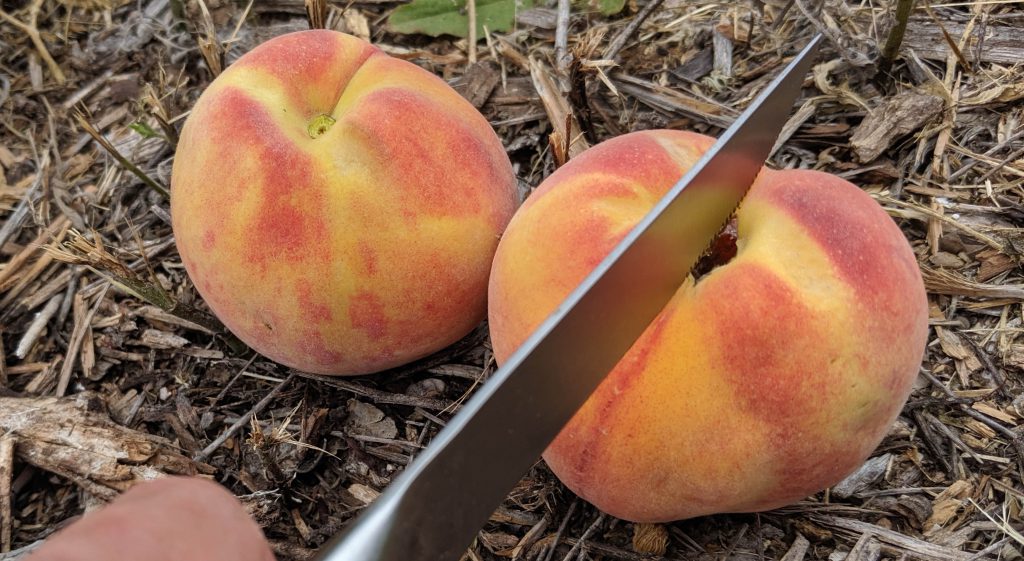
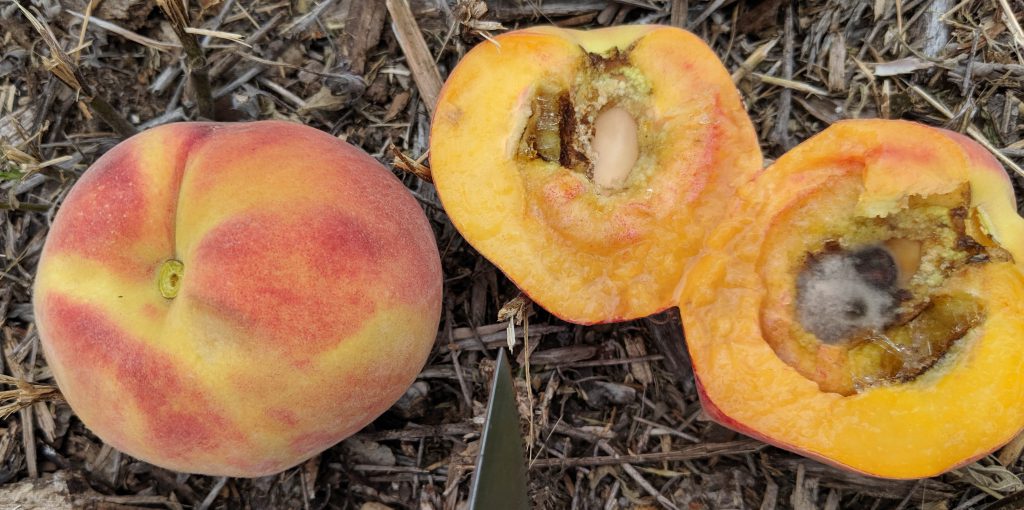
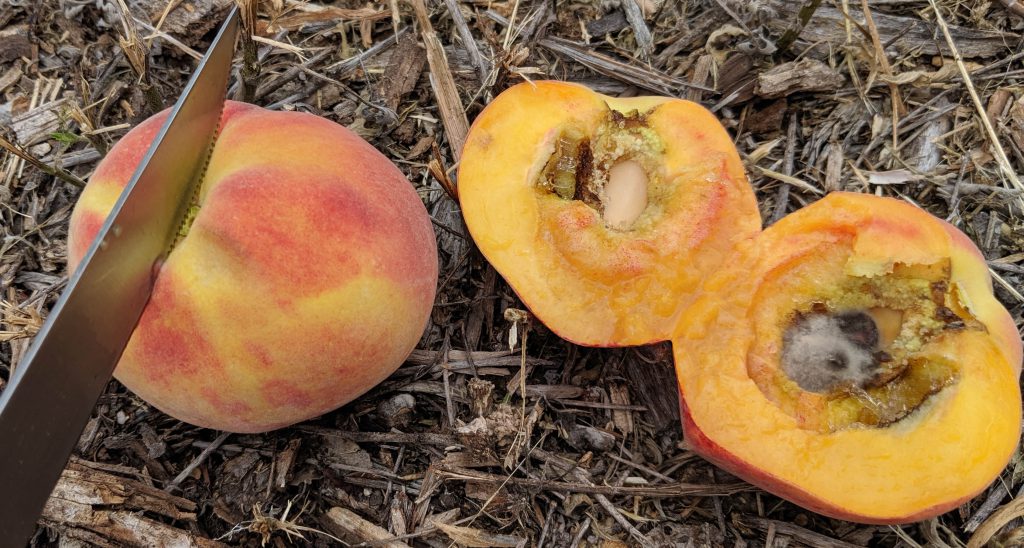
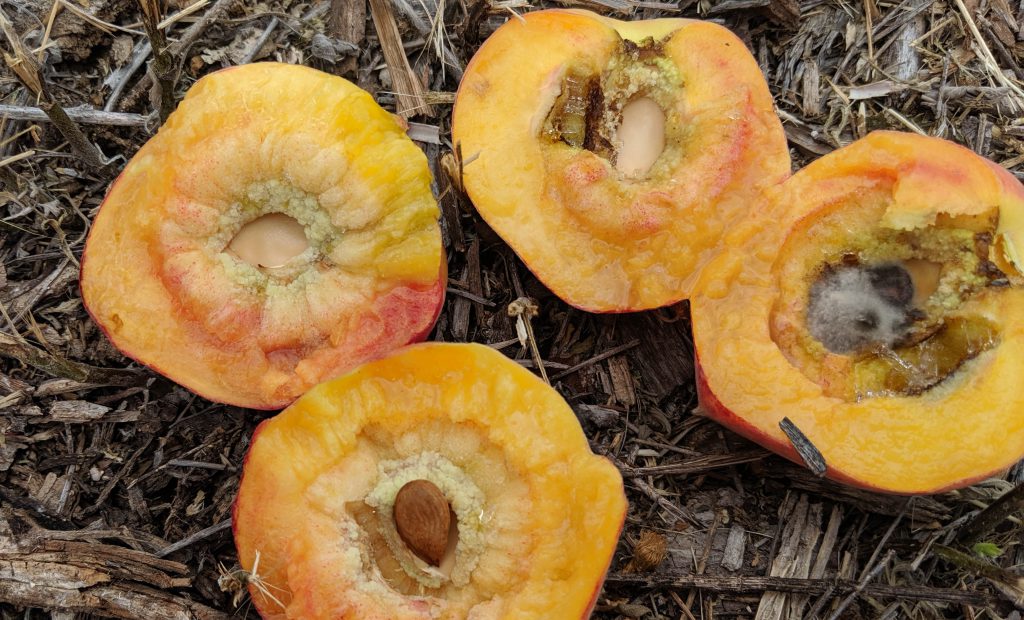
So What Do You Do With Split Pit Peaches?
Personally, I’m making Peach Cobbler and Rainey is going to make Peach Sweet Tea. There’s still plenty of good to be had in these peaches if you don’t mind cutting out the weird parts.
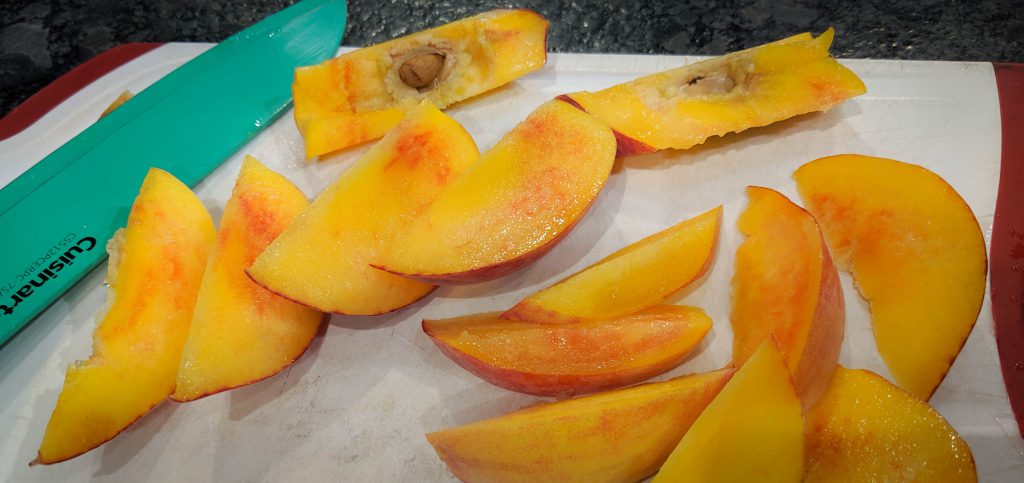

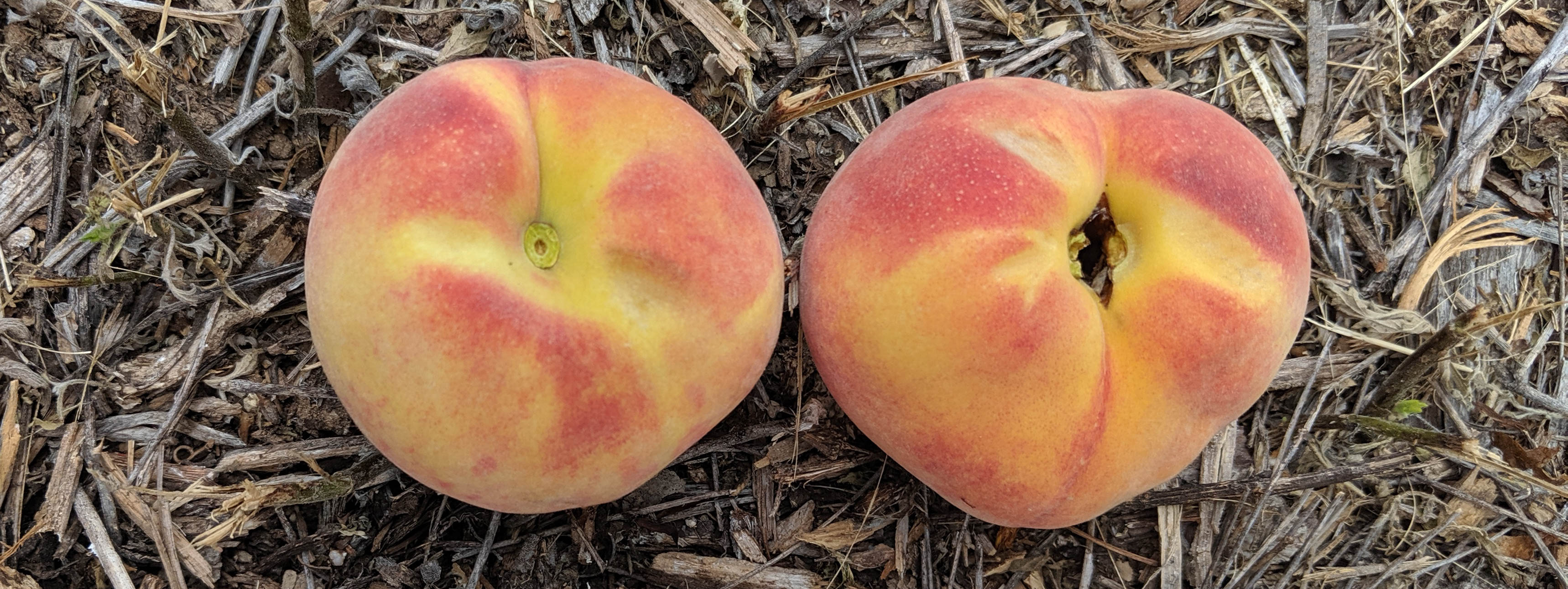
OMG I love peaches! I want to grow my own tree from seed (pit). All of the peaches I’ve been able to buy and eat have had split pits, so that I can actually get the almond looking seed out. Can I plant these?
Peaches actually don’t grow true to seed. The peach seed that comes out of a peach typically won’t produce an identical fruit. Instead that single seed is a result of the genetics of the parent tree and the tree that pollenated it. If you want a GOOD peach tree, you’re far better off selecting a specific variety that has been propagated via grafting. Grafting is the process of taking a piece of wood / branch of a known variety, and attaching it to rootstock (roots) so that it will produce a copy of that known variety.
Just like apples, there are different varieties of peaches. Because peaches tend to look pretty similar to each other, it’s less common knowledge than in apples which we can see look obviously different from each other. Growing an apple tree from seed wouldn’t produce an exact copy of that apple tree either. Apples are also propagated via grafting.
I guess that’s the long answer. The short answer is that you could probably germinate a peach seed without much difficulty, but the resulting tree wouldn’t be what you had hoped for.
Hi there,
Quick question, would you still be able to plant and/or germinate the seeds from a split pit peach? Or does the splitting of the pit affect the seed somehow?
Thanks!
Ali
Technically the entire peach pit is the seed. When the pit is split like this it usually breaks into a bunch of fragments. I doubt it would be a viable seed at that point. If you wanted to germinate a peach pit then just use a full normal peach pit. That said, if you plant a peach pit you wont get the same fruit / tree that the pit came out of! The peach pit is a result of the mixed genetics of the parent tree and what it was pollenated with. Fruit trees are instead typically propagated by grafting.
This was really helpful for me! I don’t grow peaches, just enjoy them, and I hadn’t known if it was safe to eat peaches with mold in the pit like this. Now I won’t be as worried by split pits.
I have so many peach trees that are near each other so I’m assuming they can pollinate each other. Only two of them produce peaches. The others just won’t get big and won’t produce a peach except for maybe one or two peaches that usually turn out no good.
My second issue is the leaves turn yellow or orange early on and I was told it was because I had cedar trees or pine trees too close to them. I used this copper powder or spray on the trees to help fight this issue. Once they get this problem does that mean they will never produce peaches? I was told that. And they look so young like they did when I planted the trees they’re not getting bigger even the ones that aren’t affected by pine and cedar trees. What’s going on?
My Apple trees do the same thing. And I have two plum trees that aren’t affected by cedar or pine trees but they’re just not growing big and not producing any fruit.
I planted other trees the exact way and why are they producing but not the rest of my trees?